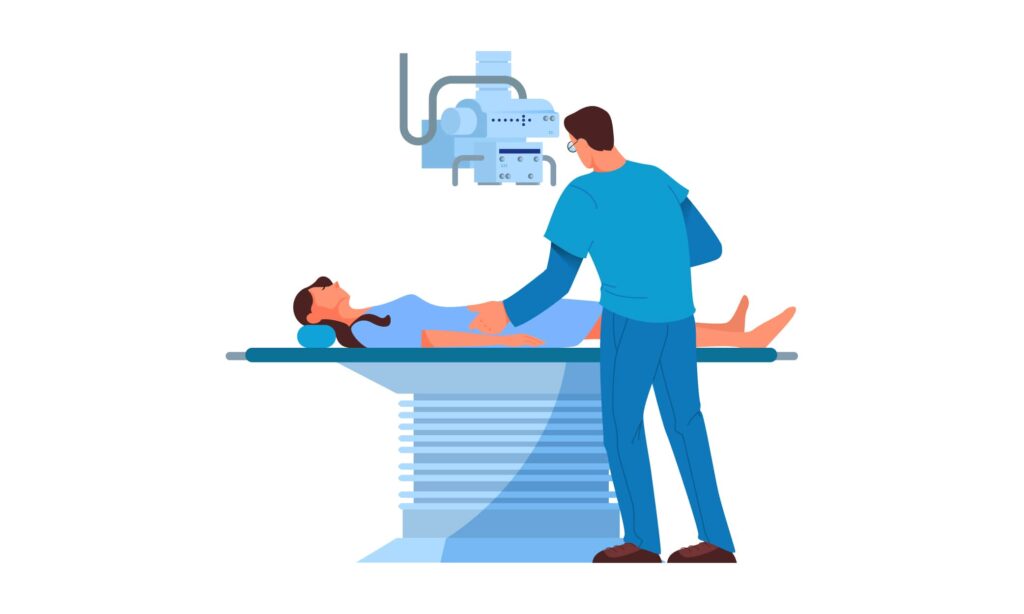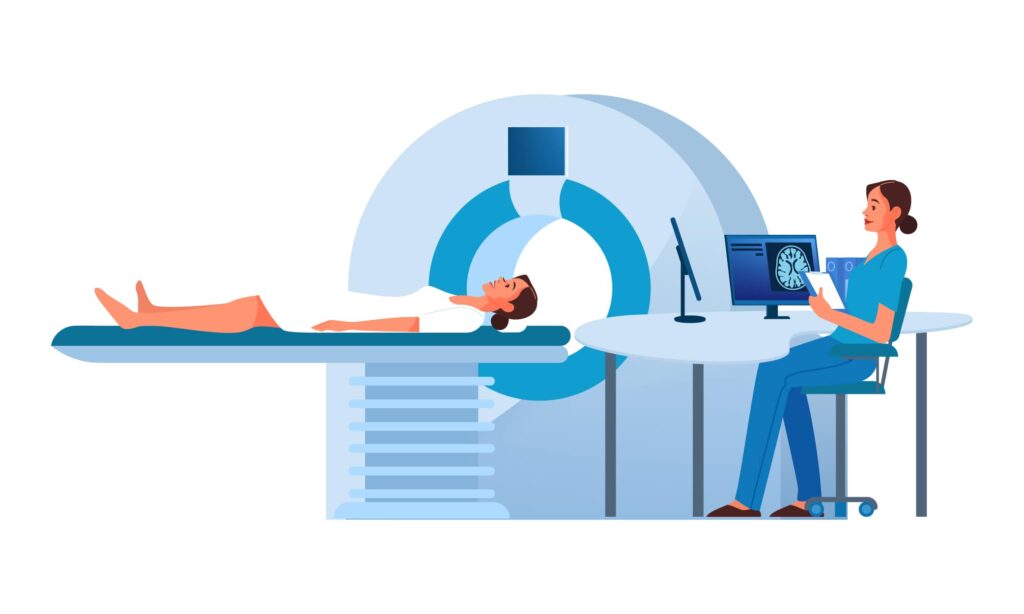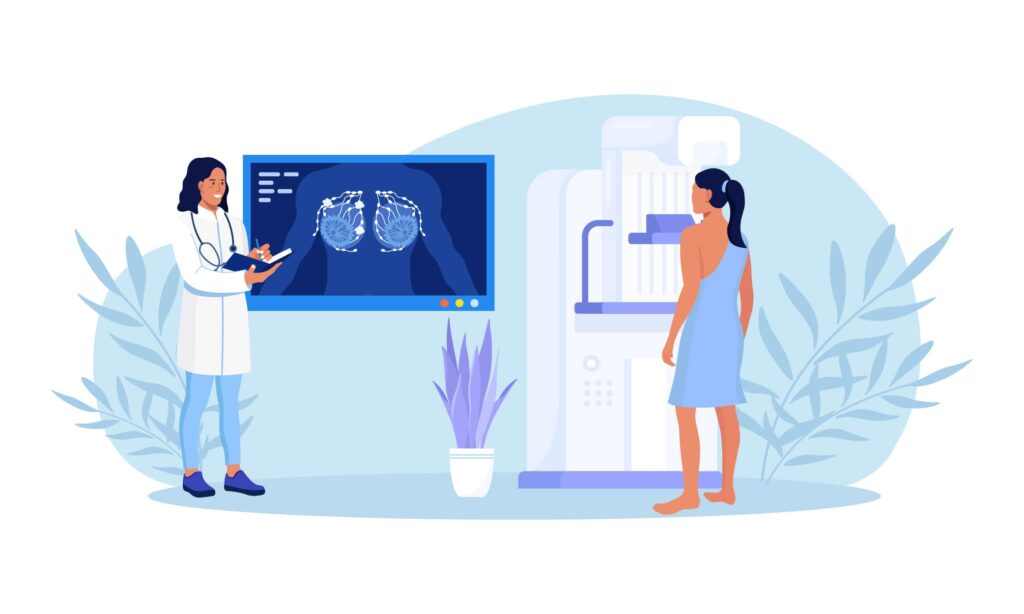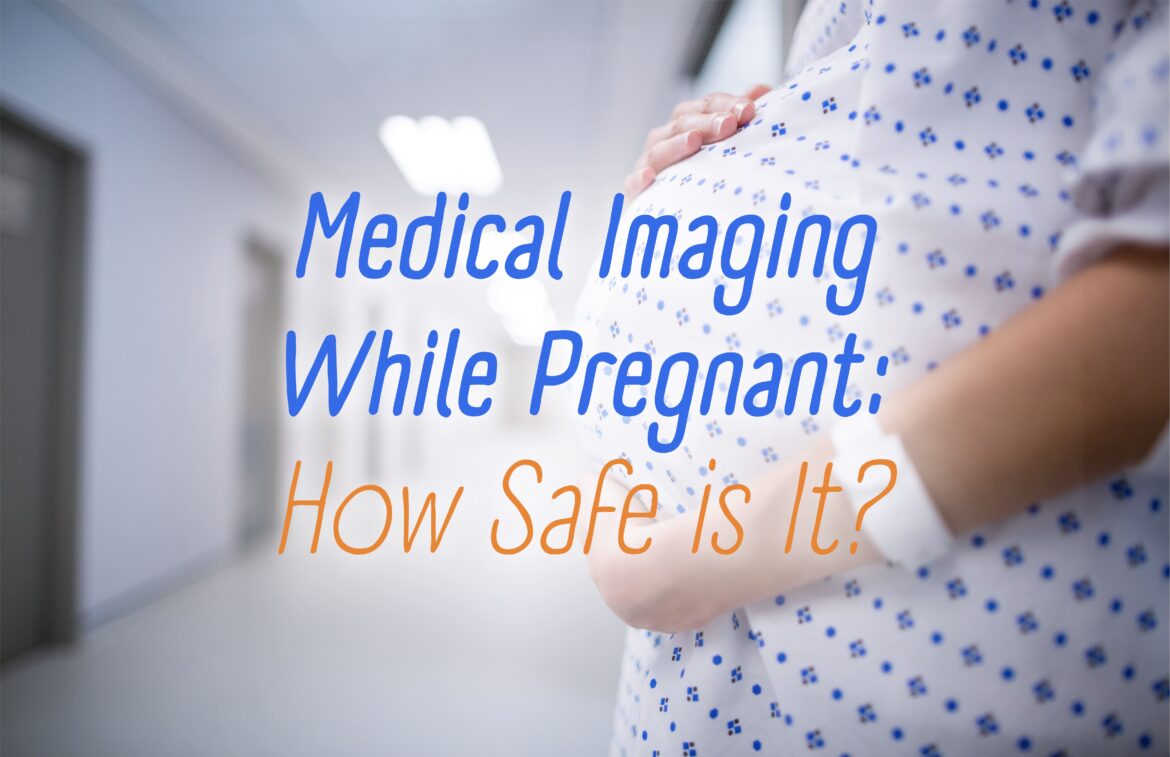Pregnancy is a time of change. For many women, its also a time when they feel especially vulnerable. Requiring medical care for any reason while pregnant can be a frightening experience. Medical imaging, like x-rays, CT scans or MRIs, is no exception. That’s why it’s important to understand the potential risks and benefits of medical imaging while pregnant.
For pregnant women and their families, giving birth to a healthy baby is a top concern. But a pregnant woman’s health and well-being is also of the highest priority. And a mother’s health has a huge impact on their unborn baby’s health.
There are many reasons why a doctor might recommend that a pregnant woman have an imaging exam. Imaging exams can include MRIs, CT scans, x-rays, mammograms or PET scans. These tests are essential for monitoring, diagnosing and treating patients, including pregnant women.
Potential Risks from Imaging Exams While Pregnant

Some pregnant patients might think they can’t have any of these exams because of risks to their unborn baby. Many are concerned about radiation exposure in particular. But not all medical imaging exams use radiation. And even if they do, many exams are safer for an unborn baby than you might think.
Your care team will take many factors into account when considering a medical imaging exam. This article is intended as a tool to help you become more educated about the safety of these exams. As always, talk to your care provider about your concerns and fears. They can help you make the best choice for your health and the health of your unborn baby.
Types of Imaging Exams
MRI

Did you know that not all imaging techniques use radiation? Of the five we’re looking at in this article, MRI is the one modality that does not use any radiation.
Instead, MRIs use strong magnetic waves to produce detailed images of soft tissues like organs, tendons and joints. Because they use magnetic waves, there are no proven risks to getting an MRI during pregnancy.
MRIs are often used with contrast to produce more detailed images. But MRI contrast is rarely used when imaging pregnant patients. This is because the contrast is made from gadolinium, which has been shown to cross the placenta. Long-term effects from gadolinium on a fetus are currently unknown.
If MRI contrast is necessary in your case, your physician will help you consider all your options. They will recommend what is best for both you and your unborn child.
X-ray

One of the most performed imaging tests is an x-ray. X-ray uses small amounts of radiation to create images of the body, especially bones.
In almost all cases, getting an x-ray during pregnancy does not expose the fetus to radiation. The only exception may be an abdominal x-ray. There is debate among scientists about whether the radiation from an abdominal x-ray is enough to slightly increase the risk of affecting a fetus. If you need an x-ray of your abdominal area, your doctor will talk with you about the potential risks. Together, you can decide what would be best in your specific situation.
CT Scan

Receiving a CT scan during pregnancy has not been shown to increase radiation exposure to the fetus. Even though CT scans use more radiation than x-rays, the increase is not enough to create additional risk for an unborn child.
The one exception may be imaging of the pelvis or abdominal areas. An abdominal CT during pregnancy might result in a very slightly increased risk for a fetus. But it is up to you and your care team to weigh that small risk against the potential negative health effects of not receiving a scan.
If you need a CT scan with contrast, know that CT contrast is made from different materials than MRI contrast. CT contrast is generally considered safe for an unborn child.
Mammography

It’s unlikely that a patient would schedule a routine mammogram during pregnancy. But there are still times when a physician might recommend a mammogram while pregnant.
Before scheduling a mammogram, your care provider might choose to order a breast ultrasound instead. Ultrasound uses harmless sound waves to create images of your breasts. It poses no risks to an unborn baby.
If a traditional mammogram is needed, know that the chance of exposing a fetus to radiation during a mammogram is low. The amount of radiation used in mammography is small. And since it’s not directed at the abdomen, there is little risk of exposure to the unborn baby.
In many cases, your technician may place a lead shield on your belly to block any radiation scatter that may occur during a mammogram.
PET Scan

PET scans are far less common than the other forms of imaging we’ve discussed. They are used to determine how your organs or other tissues are functioning. They involve the injection of radioactive drugs that show both normal and abnormal bodily function.
Having a PET scan while pregnant can be safe for both you and your fetus. Because of the possible effects of the radiation, your physician will only recommend a PET scan when the benefits outweigh the risks of possible radiation exposure.
Your physician may vary the dosage of the radioactive drugs depending on what trimester you are in. The doses will be lower earlier in pregnancy because the fetus is more susceptible to being harmed by the radiation. As the fetus grows, radiation doses can increase.
As always, your care team will help you make the best choice for your health and the health of your unborn baby.
UVA Health: Experts at Imaging Pregnant Women

At UVA Health, our care team is highly trained and experienced in caring for pregnant women.
Our radiologists are all subspecialty trained. This means they have the most advanced training possible in their fields. They have expertise when advising your physicians about which exams are necessary and safe to perform while pregnant.
Our technologists use the scanning machines to take your images. They also accompany you throughout your imaging appointment. They will take care to make your experience as safe and comfortable as possible. For pregnant patients, they will use pillows and different positions to image you comfortably. In some cases, they can provide a fan and rest breaks as well.
At UVA, our technologists practice ALARP (As Low As Reasonably Possible). This is a practice that makes sure you and your unborn baby are exposed to the smallest amount of radiation needed to produce medical images. With ALARP in place, our technologists help limit your radiation exposure while pregnant.
Talk to your care provider today about scheduling your imaging exam at UVA Health.



